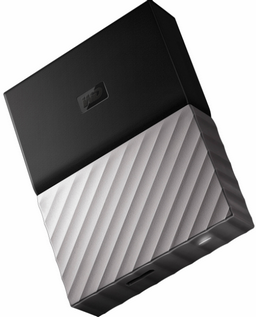Many users owning this drive reported that they encountered many problems where their drive wouldn’t connect to their computer. The drive would light up and would show signs of ‘connecting’, the drive would be present in device manager, but the computer would not recognize the drive. This problem may occur due to a number of different reasons. The cable may be faulty or the device drivers may not be installed correctly. We have listed down a number of different workarounds. Start from the top and work your way down.
Solution 1: Trying another Cable
Majority of the problems which occur are due to a faulty cable. Cables are pieces of hardware and don’t need a reason to become faulty. After much use, almost all cables require that you get them replaced. First of all, make sure that all the pins are inserted correctly into the drive. Next, make sure that you are plugging the drive into a working USB port. You should try multiple ports and see if they make any difference. Also, try checking the drive on another computer and see if is being detected there. If it isn’t, it means that there is probably some fault in your cable. Get it replaced and only purchase a valid cable designed for your drive. There are a lot of compatibility issues when we speak about cables designed for hard drives. If changing the cable doesn’t do any good, you can move to the other software solutions listed below.
Solution 2: Changing Drive Letter and Path Name
Another workaround we can try is changing your drive’s letter or path name. Each drive is identified by a unique drive name along with a path through which it can be accessed. We can allocate another drive name to your drive and see if this makes any difference.
Note: If your drive already has a name, click on “Change” instead of “Add”. In this case, since the drive is already named “H”, we will click on “Change and select a new drive letter for the hard drive”.
Solution 3: Reinstalling USB Controllers
USB controllers are pieces of hardware which initialize, power, and run your USB devices. They are the main driving force behind all connections done through USB. We can try refreshing their drivers and see if this solves the problem at hand. We will first uninstall the drivers and then, restart your computer. When the computer restarts, it will automatically detect the hardware connected and will install the required drivers.
Solution 4: Updating Device Driver
If all the above solutions don’t work, we can try updating the drive’s drivers. Drivers are the main working force for the operation of any device. If all the above solutions don’t work, it means there is no problem with the cable, the file path is valid and the USB controllers are working as expected. We will first ‘ID’ the drive, download the drivers to an accessible location and then try reinstalling them using device manager. Note: This solution is for situations where your drive is showing up as “Unknown device”. If your drive is showing up correctly in the device manager, you can manually download the drivers without the steps listed below and update them accordingly.
Note: You should also try plugging all other USB devices from your computer. These devices include your mouse, keyboard, USB flash drives etc. After they are all plugged out, restart your computer and only plug in the hard drive.
How to Make a Passport Size Photo Using IDPhoto4YouIntel 4C/8T Tiger Lake CPU With Integrated Xe GPU For Ultra-Thin And…DTS:X Ultra Not Working? Try these fixesHow to Set up Google Chromecast Ultra








